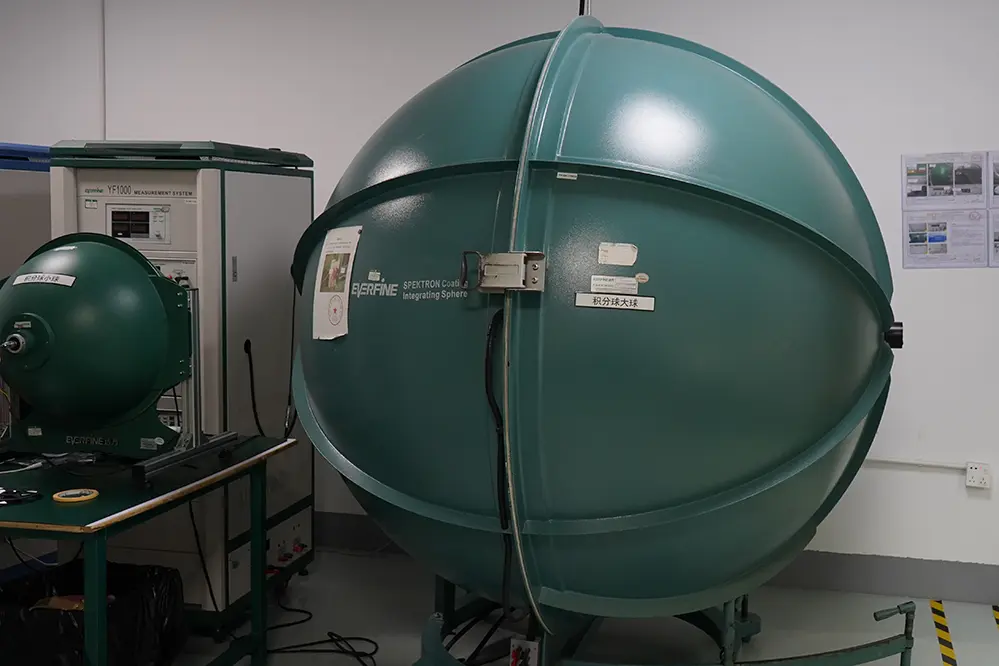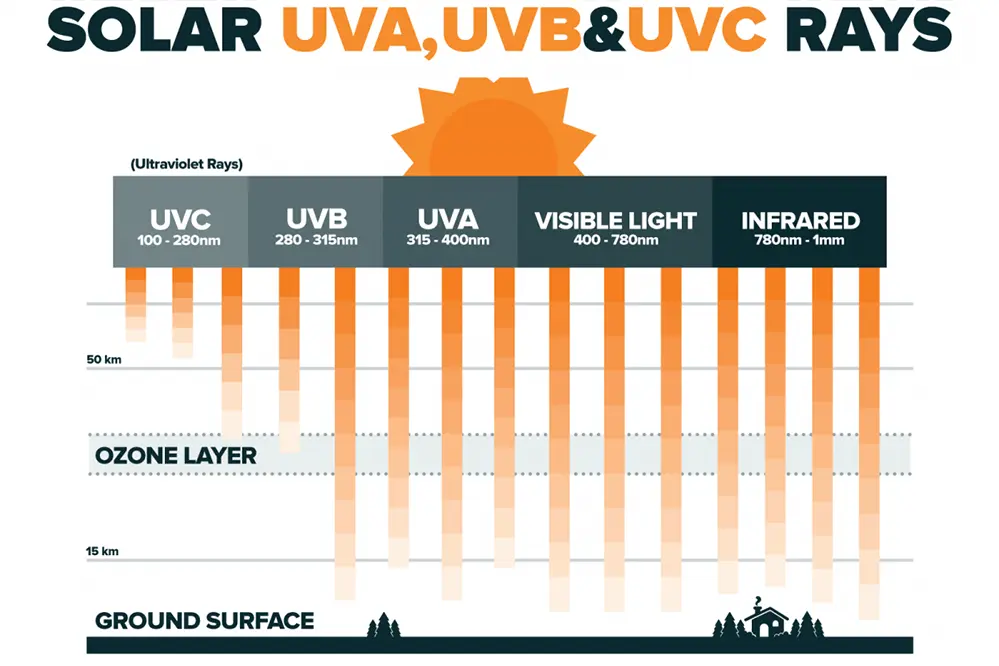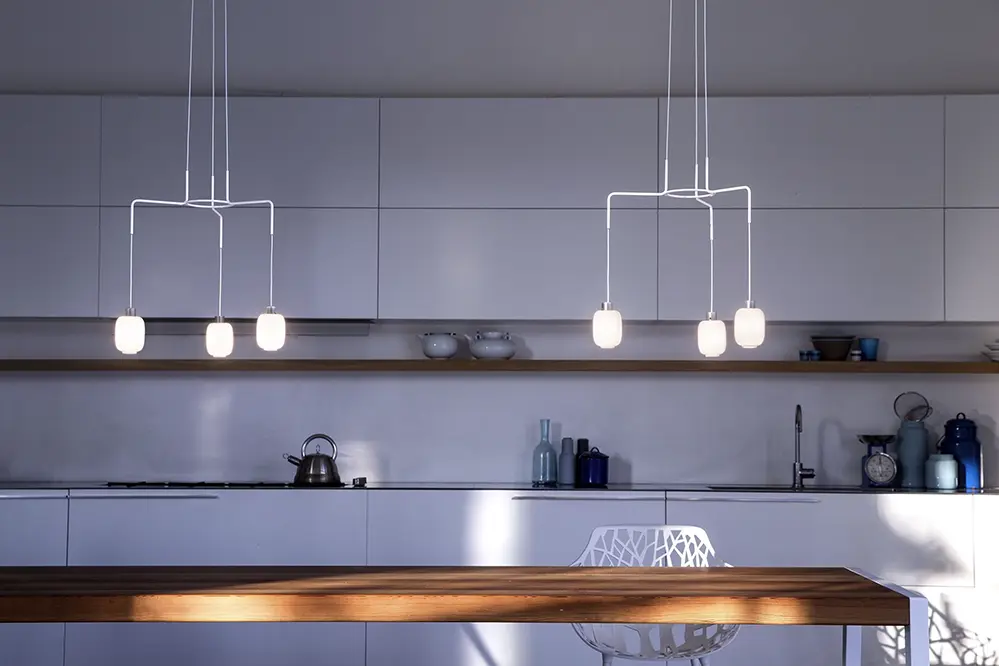Welcome to our enlightening blog post, where we shed light on the captivating world of lighting and explore the fascinating concept of lumen. If you’re a lighting enthusiast or a professional seeking to deepen your understanding of this essential element, you’ve come to the right place. Prepare to embark on a journey that will illuminate your knowledge and leave you with a bright insight into the significance of lumen in lighting.
In the realm of lighting, lumen reigns supreme. It is the metric that measures the brightness of a light source, providing a tangible representation of its luminous power. Understanding the importance of lumen in LED technology is crucial for anyone looking to make informed decisions and optimize their lighting solutions. So, let’s delve deeper into the world of lumen and discover its profound impact on the way we illuminate our spaces.
I’m Tom, an LED lighting industry veteran since 2005. With this blog post, I aim to share my insights and experiences, providing you with a comprehensive guide to understanding lumen in lighting. Together, we’ll explore its intricacies, unravel its significance, and equip you with the tools to evaluate and optimize your lighting choices. So, without further ado, let’s embark on this illuminating journey together!
Demystifying Lumens in Lighting

Lumens are the quantifiable expression of light output, providing a measure of luminous flux or the total amount of visible light emitted by a source. When evaluating lighting, lumens give us an objective metric that describes brightness from a user’s perspective, independent of energy consumption or lamp type.
In practical terms, lumens serve as the currency of light — a higher lumen count signifies greater brightness, akin to a more vivid currency of visibility. They stand apart from watts, traditionally associated with light bulbs, which define energy use rather than light output. Therefore, lumens are pivotal when evaluating the performance and efficiency of LED luminaires and other lighting technologies in delivering visible light to human environments.
Lumen Definition and Importance
Lumens measure the total visible light output, serving as an essential brightness indicator for lighting fixtures.
One lumen equates to the light of one candle illuminating a square foot.
In LED lighting, lumens are integral, signifying the efficiency and brightness levels distinct from power consumption metrics like watts.
Although lumens are not the only factor in lighting choice, they critically influence the perceived brightness and effectiveness of LED luminaires.
Lumens vs. Watts: Understanding Efficiency
The relationship between lumens and watts is pivotal for determining the energy efficiency of lighting solutions.
- Lumens measure the total output of visible light from a source, meaning the higher the lumen count, the brighter the light.
- Watts indicate the amount of energy a light fixture consumes, reflecting the power requirements, not brightness.
- An efficient lighting solution has a high lumen-to-watt ratio, ensuring maximum brightness with minimal power consumption.
To gauge efficiency, compare lumens per watt among different lighting options.
Understanding this correlation is fundamental when selecting luminaires for both energy conservation and optimal illumination.
The Role of Lumens in LED Lighting
In the world of LED lighting, lumens serve as a critical measure of light output, essentially quantifying the visual impact of a light source. Unlike wattage, which conveys power consumption, lumens directly reflect the luminous efficacy of a fixture, revealing how well a lamp converts electrical power into visible light. Therefore, discerning the lumen output of LED products is paramount in evaluating their performance and suitability for various lighting applications.
Given the prominence of LED technology in achieving energy-efficient lighting designs, lumens take on a heightened significance. They furnish a clear metric to compare the brightness offered by different LED fixtures and enable a more informed selection process for lighting professionals and enthusiasts alike. This ‘currency of light’ is indispensable in the progression towards more sustainable, well-lit environments, as it directly correlates with a fixture’s ability to meet the functional lighting requirements while minimizing energy draw.
Why Lumens Matter for LEDs?
Lumens are the essence of a light’s visible output.
When evaluating LED lighting, lumens take center stage. They are the definitive measure that directly correlates to how bright an LED light will appear. This is contrary to the antiquated reliance on wattage, which used to serve as a brightness guide during the incandescent era. Now, lumens deliver an accurate representation of performance, independent of power consumption. Thus, for LEDs, the metric is essential for understanding and quantifying illuminance.
Measuring lumens ensures brightness consistency.
In the context of LEDs, lumens are pivotal – they reveal true brightness levels. This attribute is especially crucial when replacing incandescent bulbs with LED options, guaranteeing the new lighting solutions provide sufficient luminosity for the intended space.
Recognizing lumens promotes energy-efficient choices.
Establishing lumens is foundational for lighting efficiency. With this knowledge, selecting high-lumen, low-wattage LEDs becomes simplified, advancing both economic and environmental objectives. Given the burgeoning expansion of LED applications, this lucidity in luminous understanding becomes even more pronounced. It’s particularly salient as we approach the latter half of 2023, with a heightened focus on sustainability in lighting design. Understanding lumens ensures that the latest energy-efficient advancements are optimally utilized, enhancing the correlation between luminous efficiency and reduced power consumption within the lighting industry.
Comparing LED Lumens to Traditional Lighting
Lumens quantify light output irrespective of the source.
Understanding lumens is fundamental when comparing LEDs to traditional lighting technologies. Unlike watts, which measure energy consumption, lumens reflect the amount of light emitted, irrespective of the technology used. Consequently, a luminaire’s light output can be directly compared across different lighting technologies by examining its lumens.
LED lumens are markedly more energy-efficient.
With LEDs, fewer watts generate more lumens – a stark contrast to incandescent bulbs. This efficiency renders LEDs inherently advantageous for achieving the same level of illumination with significantly reduced energy expenditure, which is both cost-effective and environmentally beneficial.
Direct comparison with traditional bulbs is complex.
To equate LED lumens with traditional lighting necessitates consideration of several factors – light distribution patterns, color temperature, and fixture design play pivotal roles. Therefore, it’s not just about the quantity of lumens but also how effectively they’re utilized within the space.
Advancements in LED technology keep raising the bar.
As LED technology advances, the efficacy of LEDs – lumens per watt – continues to climb. Regulatory standards like the Energy Star program encourage this progress, ensuring that the measure of efficiency for lighting includes both high-lumen output and minimal energy usage. This ongoing innovation underscores the importance of lumens in the assessment of lighting performance.
Measuring Light Output

Lumens measure the total amount of visible light emitted by a source. This metric is crucial for comparing lighting efficiency across different technologies, especially in LEDs where high lumen counts are desirable.
In practical terms, evaluating lumens involves measuring illuminance on a surface area (lux) and translating it to perceive brightness, which lends precision to establishing the efficiency of various light sources. This process ensures fair comparison of light output.
To assess “lumens”, specialized equipment known as an integrating sphere or, alternately, a goniophotometer is employed in controlled settings to ensure accuracy in light measurement.
Tools for Checking Lumens
Accurate measurement of lumens is critical for assessing the performance of lighting products. High-quality light meters are among the primary tools used for this purpose.
Light meters come in various types, ranging from simple hand-held devices to sophisticated laboratory-grade equipment. The basic models can be used on-site to check the lumen output of installed fixtures, while advanced versions, such as spectroradiometers, offer detailed analysis, including the spectral distribution of light and exact lumen output. Such precision instruments provide critical data for optimizing lighting solutions in diverse applications.
For a quick field check, a calibrated lux meter can suffice. It measures the light intensity hitting a surface (lux) which, with proper geometry and calculations, is translatable into lumens. However, this method does not replace comprehensive lab assessments but provides a general indicator of light output levels.
Professionals and researchers may utilize integrating spheres, which measure the total light output from a source within a controlled environment. This tool encompasses the light emitted in all directions and provides an exact lumen count. When accuracy is paramount, such as in product development or quality control, integrating spheres become indispensable, offering unmatched precision and reliability in lumen measurement.
Interpreting Lumen Measurements
Lumen, symbolized as lm, quantifies the total amount of visible light emitted by a source.
- Understand the Basis: Recognize that one lumen represents the light intensity of one candlepower spread over a square foot.
- Consider the Application: Lighting for a cozy bedroom requires fewer lumens than that for a bustling office space.
- Comparative Analysis: Use lumens to compare the light output of different fixtures, independently of their power source or technology.
Selecting the appropriate lumen output is essential for task-specific lighting efficiency.
Understanding lumens is key to evaluating light quality and energy usage for LED lighting systems.
Optimizing Your Space with Lumens
Accurate lumen measurement facilitates the customization of illumination levels to suit specific environmental needs, enhancing both functionality and ambiance. By calibrating the luminous intensity, one can create a setting that is conducive to the task at hand, whether it requires the focus of sharp, bright light or the calm of softer tones. Determining the right lumen output for a given space involves assessing the purpose of the area, the existing light conditions, and the desired visual impact.
To truly tailor ambient luminosity in a space, consider adopting a “layered lighting” approach. Begin by setting a base level of illumination using fixtures with a suitable lumen output, then overlay accent or task lighting as needed to refine the overall effect. By isolating and addressing the various aspects of a lighting scheme, you grant yourself the capability to modify and control the environment’s brightness, thus enhancing the spatial experience. It is here that lumens become a critical factor in designing a visually pleasing and functionally appropriate lighting plan.
Estimating Lumen Requirements
Determining the correct lumen output is vital for achieving the desired brightness in a given space.
- Assess the Room’s Dimensions: Calculate the square footage by multiplying the room’s length by its width.
- Understand the Activity’s Nature: Different activities require varying levels of brightness, measured in lumens per square foot (or foot-candles).
- Account for the Room’s Color Scheme: Darker hues absorb light, necessitating higher lumens for desired illumination levels.
- Consider Existing Lighting Sources: Factor in natural light and existing fixtures to avoid over-illuminating the space.
- Use a Lumen Estimation Chart: Consult industry standards and lighting charts that recommend lumens for specific room types and activities.
Precise lumens calculation ensures a balance between aesthetics and functionality.
In practice, nuanced adjustments are often required, reflecting the interconnected nature of lumens, lux, and wattage.
Enhancing Ambiance with Lumen Choices
Selecting the optimal lumen output helps in creating mood, defining spaces, and accentuating architectural features. A well-chosen lumen level can transform the ambiance of any environment.
Low lumen outputs typically cast a softer, more inviting glow in a space.
In contrast, high lumen values can energize a room, promoting focus and clarity.
Striking a balance between task lighting and ambient illumination ensures a harmonious setting. Matching lumen outputs to the function of the space enhances both the utility and aesthetics.
Dimmable fixtures offer versatility, allowing on-the-fly adjustments to lumen output, which can dynamically alter a room’s atmosphere to suit various occasions.
Finally, matching lumens to occupants’ needs creates a responsive lighting design. Understanding individual preferences and tasks leads to tailored lumen applications that enhance comfort.
FAQs
What exactly is a lumen?
Lumens quantify the total amount of visible light emitted by a light source. This measure of brightness is crucial when selecting lighting for any application, emphasizing the focus on how much light is produced rather than merely the energy consumed. Essentially, lumens are the true indication of a light’s output, transcending the traditional reliance on wattage which is more reflective of energy consumption.
Why are lumens particularly important in LED lighting?
In the context of LED lighting, lumens represent efficiency. They are indicative of the amount of light that you receive for each watt of electricity used. Thus, considering lumens — rather than watts — provides a more accurate reflection of an LED’s performance regarding brightness and energy efficiency, making it a fundamental metric for comparison.
How can one determine a light fixture’s lumen output?
One way to establish a light fixture’s lumen output is by examining its specification sheet or packaging — these details are often clearly listed.
What’s the relationship between lumens and watts?
Lumens and watts are interconnected yet distinct. Lumens signify brightness, while watts indicate energy consumption. Hence, when considering LED options, the lumens-to-watts ratio is essential — it signifies the efficacy of the lighting solution, offering insights into both luminous output and energy requirement.
How has the concept of lumen evolved over recent years?
With advancements in lighting technology, especially in LED systems, our understanding of lumens has expanded. The lumen output of light fixtures has increased significantly, requiring a recalibration of how we conceive brightness in relation to energy efficiency. The ever-evolving standards of LED lighting compel professionals and consumers alike to continually learn and adapt their knowledge of lumens in accordance with the latest industry innovations.
How many lumens is good for a light?
Choosing the right number of lumens for a light depends on several factors. One important consideration is the intended use of the light. For tasks that require detailed work or focus, such as reading or crafting, a higher lumen output is typically desired. In these cases, a light with at least 500-1000 lumens would be suitable.
In general, it is recommended to have a minimum of 20 lumens per square foot of space for adequate illumination. This guideline can be used as a starting point when determining the appropriate lumen level for a specific room or area.
However, it’s important to note that individual preferences and the specific lighting needs of each situation can vary. Some people may prefer brighter or dimmer lighting depending on their personal preference or the ambiance they are trying to create. Additionally, different types of light fixtures and bulbs may have different lumen outputs, so it’s essential to consider these factors as well.
Ultimately, the “right” number of lumens for a light is subjective and depends on the specific requirements and preferences of the user. It’s always a good idea to experiment with different lighting levels to find the perfect balance of brightness and ambiance for a particular space.
Is more lumens always better?
It is commonly believed that higher lumens represent brighter light output, but it is not necessarily always better. The optimal amount of lumens depends on the specific lighting needs and preferences. A room with natural light may require fewer lumens than a room with little to no natural light. Additionally, factors such as the size of the space, the purpose of the lighting, and the desired ambiance should also be considered. Therefore, it is important to assess the lighting requirements and strike a balance between functionality and visual comfort when determining the appropriate lumens for a given situation.
How bright is 400 lumens?
400 lumens is a measure of brightness that refers to the amount of light emitted by a light source or received by a surface. It is a unit commonly used to describe the brightness of light bulbs, lamps, or other lighting products.
To put it into perspective, 400 lumens can provide a moderate amount of light suitable for smaller spaces or specific tasks. For example, a 400 lumen bulb can adequately illuminate a small to medium-sized room or be used as task lighting for activities such as reading or working on a desk.
It’s important to note that the perceived brightness of light can vary depending on factors such as the color temperature and beam angle of the light source. So while 400 lumens can provide a decent amount of light, other factors should also be considered to determine the suitability for a particular lighting application.
In summary, 400 lumens represents a moderate level of brightness that can be suitable for smaller spaces or specific tasks. However, it’s crucial to consider other factors to ensure the desired lighting effect is achieved.
How bright is 1000 lumens?
1000 lumens is a measure of brightness that indicates the intensity of light emitted by a source. To put it into perspective, 1000 lumens is considered to be quite bright and can illuminate a medium-sized room or outdoor area effectively.
In terms of comparison, a standard incandescent light bulb typically produces around 800 lumens, so 1000 lumens would be slightly brighter than that. It’s important to note that the perception of brightness can vary depending on factors such as the color temperature of the light and the sensitivity of the human eye.
When choosing lighting fixtures or bulbs, knowing the lumen output can help you determine the right level of brightness for your specific needs. For example, if you’re looking to brighten up a workspace or need task lighting, a higher lumen output would be more suitable. On the other hand, for ambient or mood lighting, a lower lumen output may be desired.
It’s worth mentioning that lumens measure the total amount of visible light emitted, regardless of the direction or spread of the light. So, a light source with 1000 lumens can be equally bright whether it is concentrated in a narrow beam or spread out in a wider area.
In summary, 1000 lumens represents a relatively bright level of light output, suitable for illuminating medium-sized spaces or providing focused task lighting. Keep in mind that when choosing lighting products, other factors such as color temperature and beam angle should also be considered to ensure the desired lighting effect.
How bright is 3000 lumens?
3000 lumens is a measure of brightness, specifically the amount of light emitted by a light source. To put it into perspective, let’s compare it to some common everyday lighting situations.
Imagine standing outside on a sunny day. The sun provides an average of 10,000 lumens per square foot. So, 3000 lumens would be roughly equivalent to one-third of the brightness you experience on a sunny day.
In terms of artificial lighting, a standard 60-watt incandescent light bulb typically produces around 800 lumens. This means that a light source with 3000 lumens would be significantly brighter than a traditional bulb and can provide ample lighting for a room or workspace.
It’s important to note that the perceived brightness of a light source can also depend on factors such as the color temperature and beam angle. For example, a narrow beam angle can make a light source appear brighter in a concentrated area, while a broader beam angle will distribute the light more evenly.
Overall, 3000 lumens is a substantial amount of light that can provide bright and well-illuminated spaces for various applications, whether it’s in residential, commercial, or outdoor settings.
How are lumens measured?
Lumens, the measure of brightness, are determined through photometric testing, where the total amount of visible light emitted by a source in all directions is calculated by integrating the spectral power distribution with the human eye’s sensitivity curve.
Which lighting types produce most lumens?
High-intensity discharge (HID) lamps, such as metal halide and high-pressure sodium, produce the most lumens, typically ranging from 10,000 to 40,000 lumens. Light-emitting diode (LED) lamps have also become a popular choice, with lumen outputs ranging from 1,000 to 20,000 lumens, depending on the model. Fluorescent lamps can produce around 2,500 to 8,000 lumens, while incandescent lamps have a lower output, ranging from 450 to 2,000 lumens. However, it’s important to note that lumen output can vary based on factors such as lamp size, wattage, and efficiency.
Conclusion
In sum, lumens constitute a fundamental metric in lighting. This measure of luminous flux, or perceived brightness, is pivotal for gauging the suitability of a light source for specific applications.
To underscore, a high-lumen LED light signifies exceptional brightness, attendant with potentially reduced energy consumption. The significance of this metric escalates especially in LED technology, which champions efficiency and performance. Hence, selecting lighting solutions with optimal lumen output becomes imperative for prescient lighting design, maximizing visual comfort while judiciously managing energy use.
Furthermore, we must recognize lumens as a cornerstone in lighting decisions. From residential comfort to industrial functionality, lumens help articulate the narrative of light, allowing us to manifest our desired ambiance and perform tasks with improved visibility and sharpness. The figure’s ubiquity, therefore, is not solely about numbers; it’s about enriching the human experience through the thoughtful application of light.
Finally, as we deepen our comprehension of lumens in the context of LED lighting, we navigate a pathway to more enlightened choices. By meticulously selecting fixtures based on lumen output, we achieve more than just lighting a space; we craft environments conducive to well-being and productivity. It’s this blend of scientific understanding and creative application that elevates lumens from a mere figure to a pivotal component in the transformative power of light, shaping spaces that inspire, function effectively, and conserve energy for a more sustainable future.





